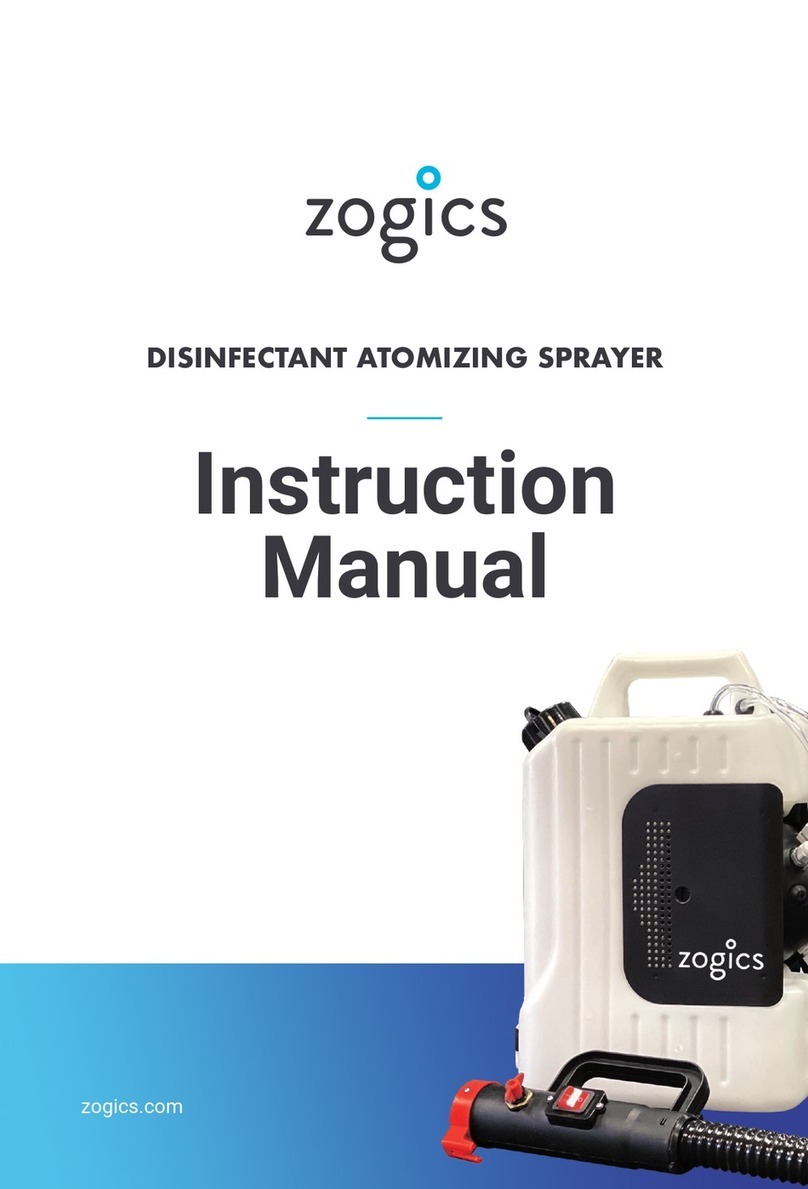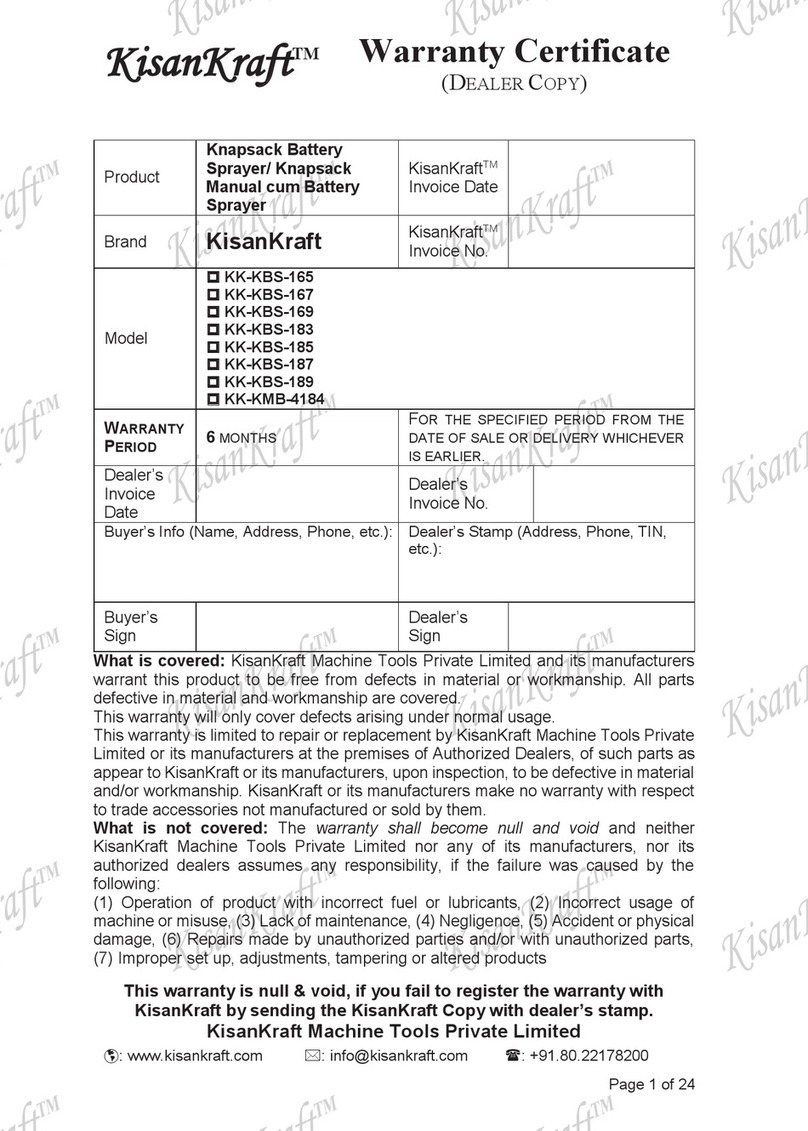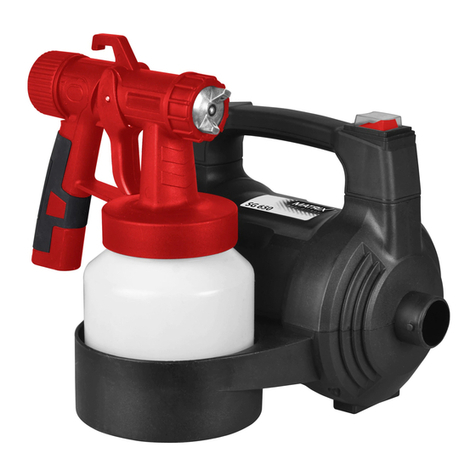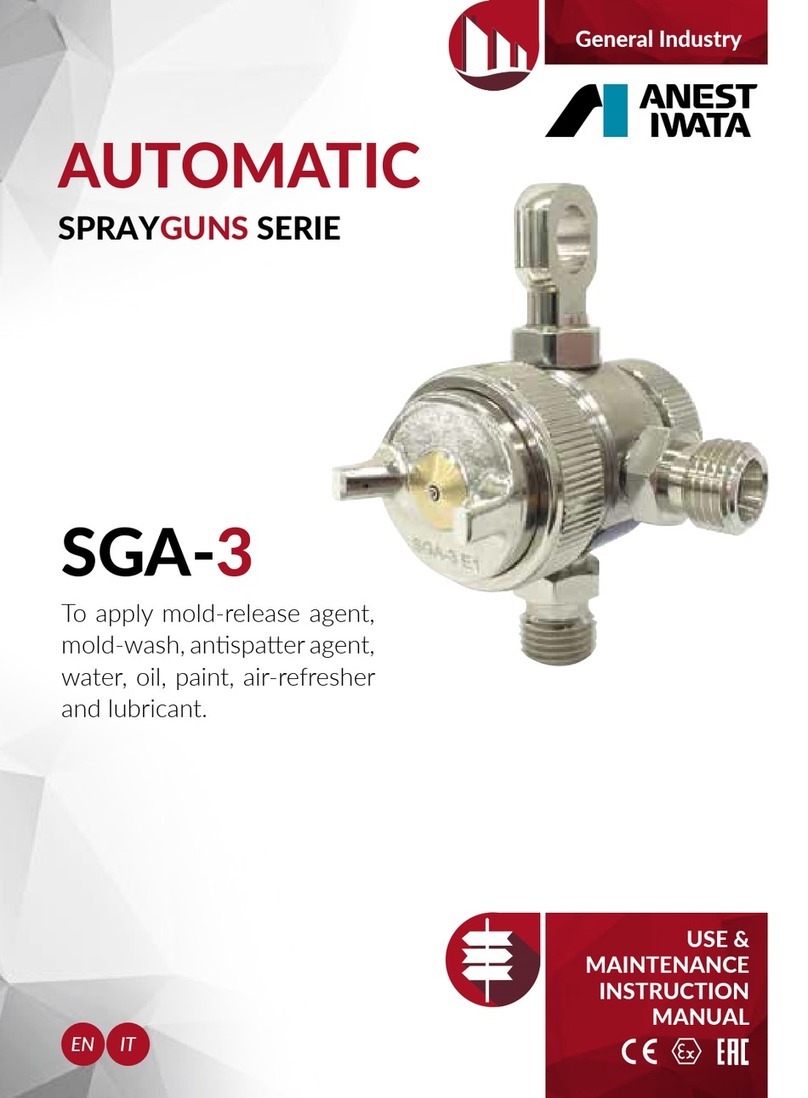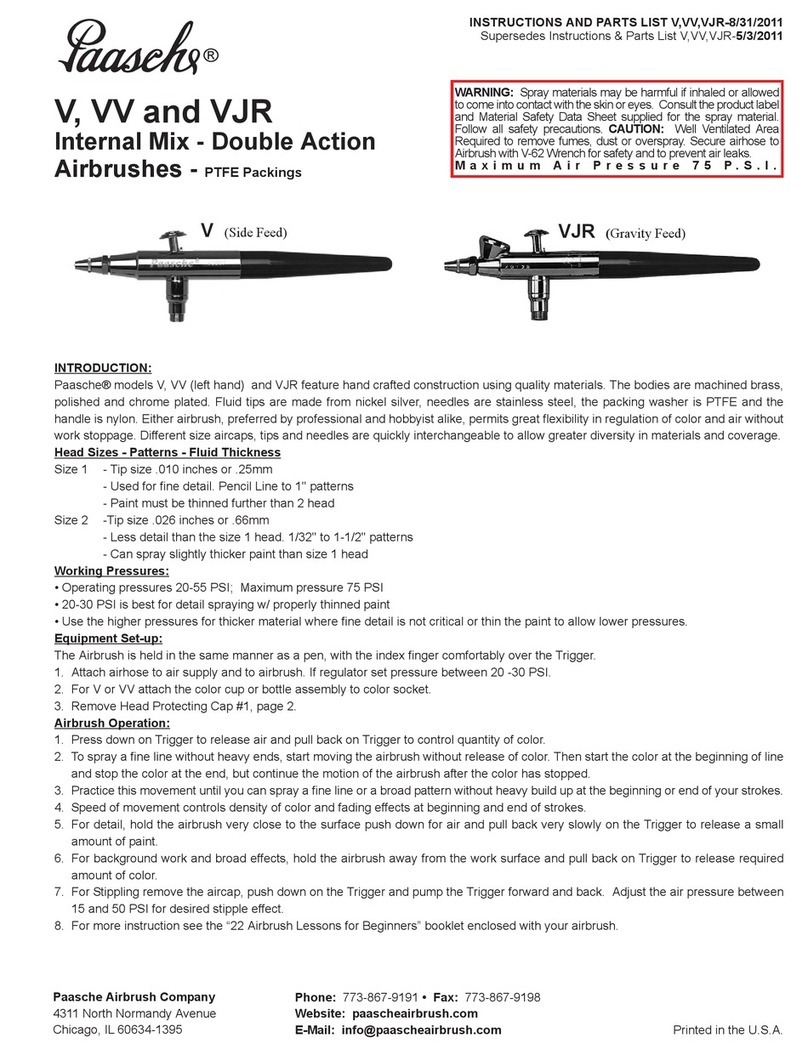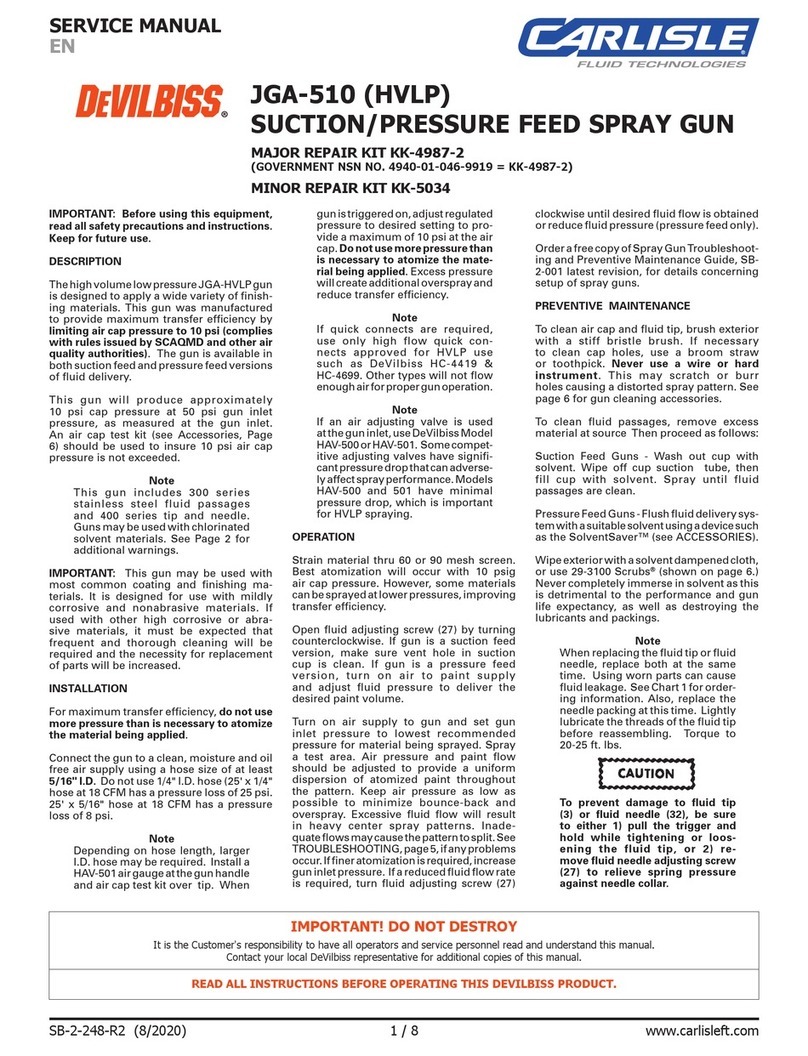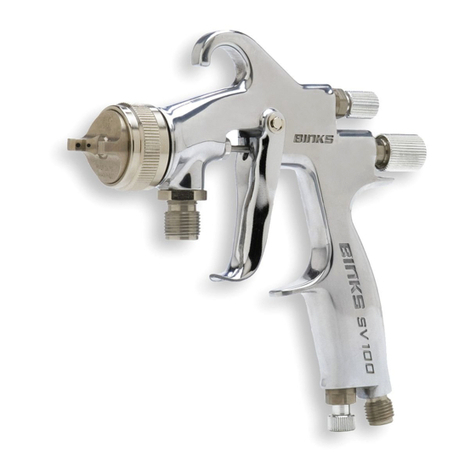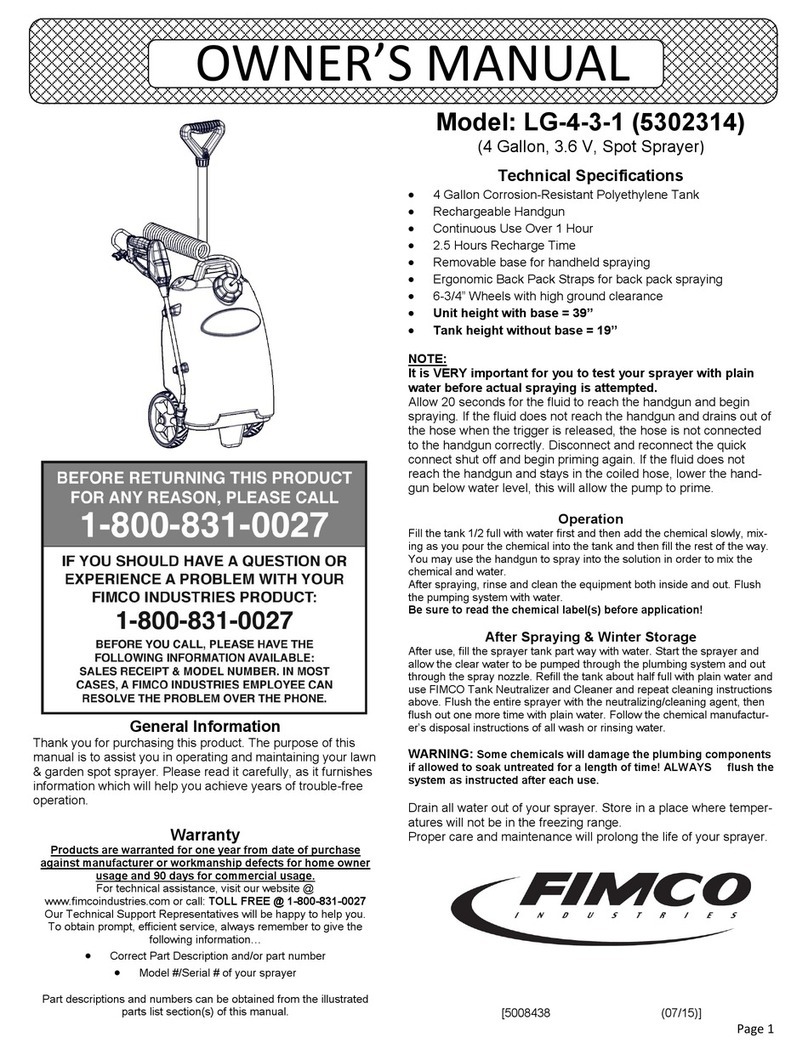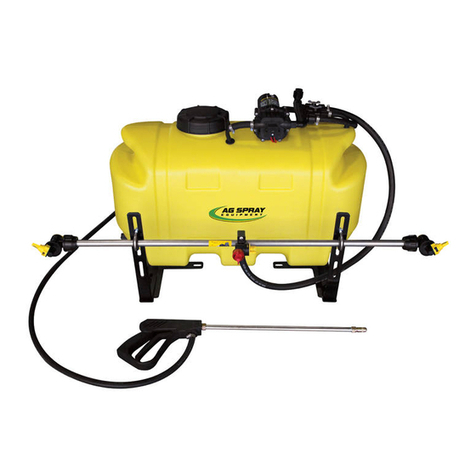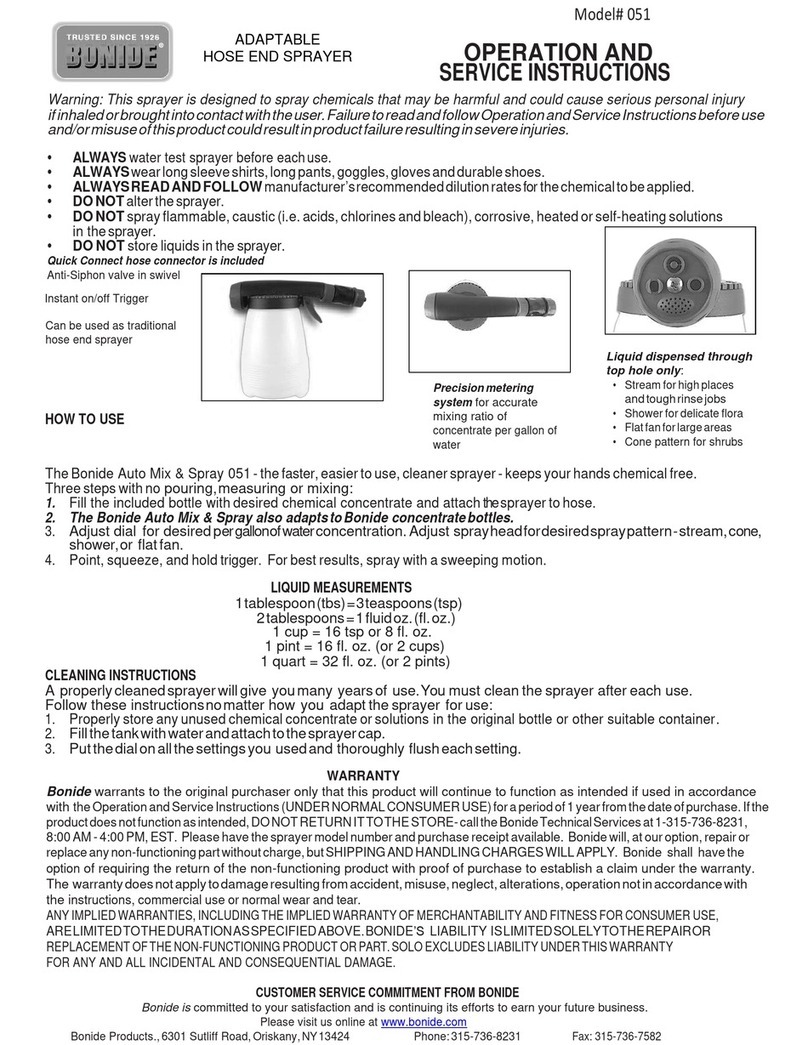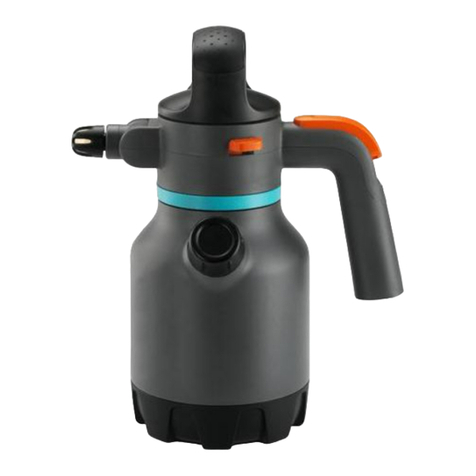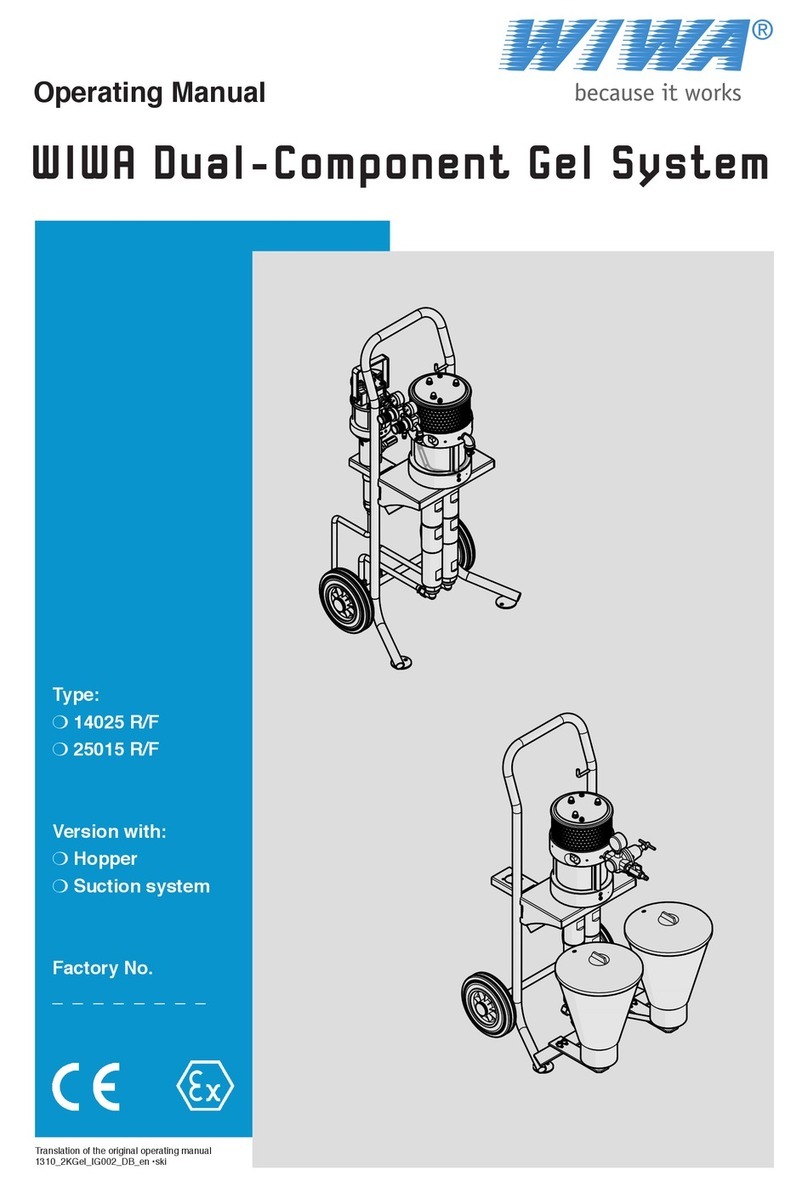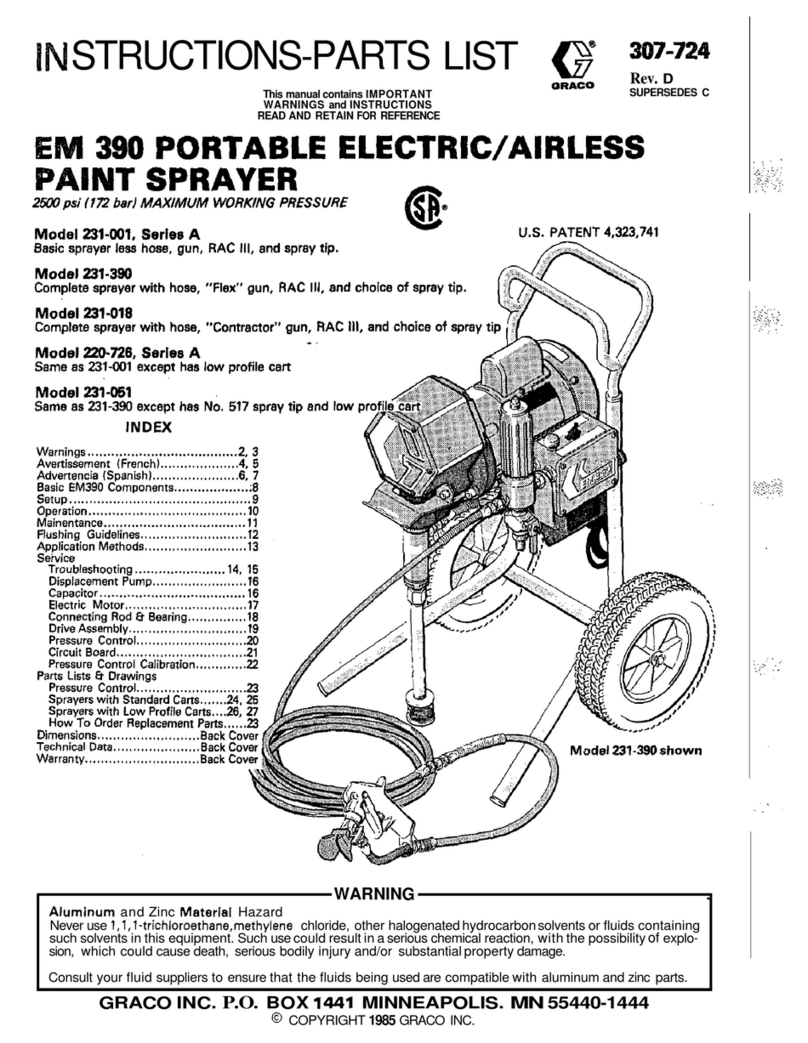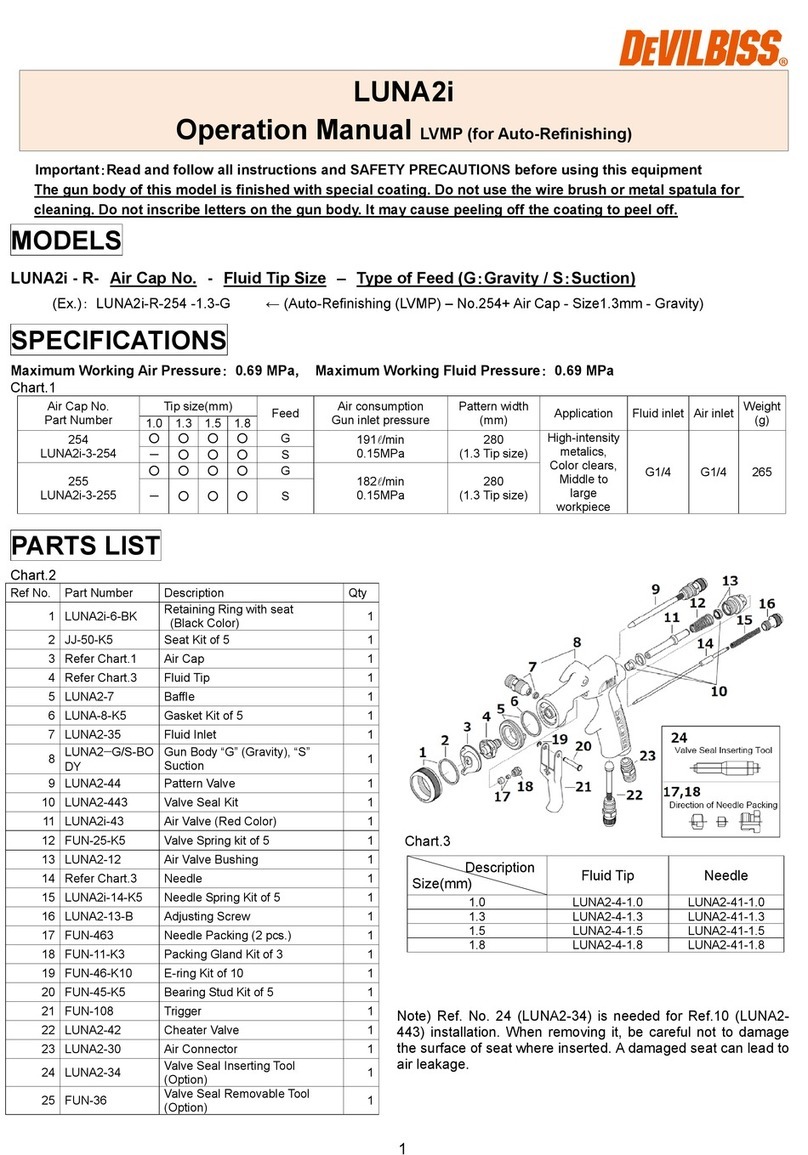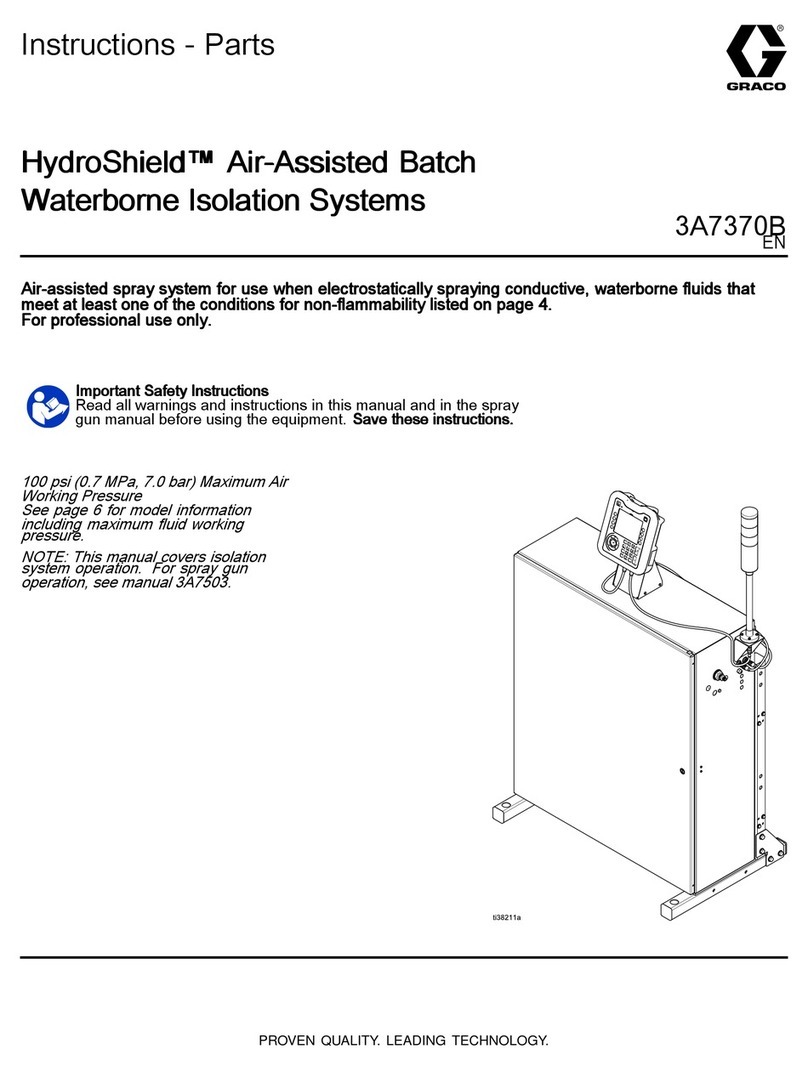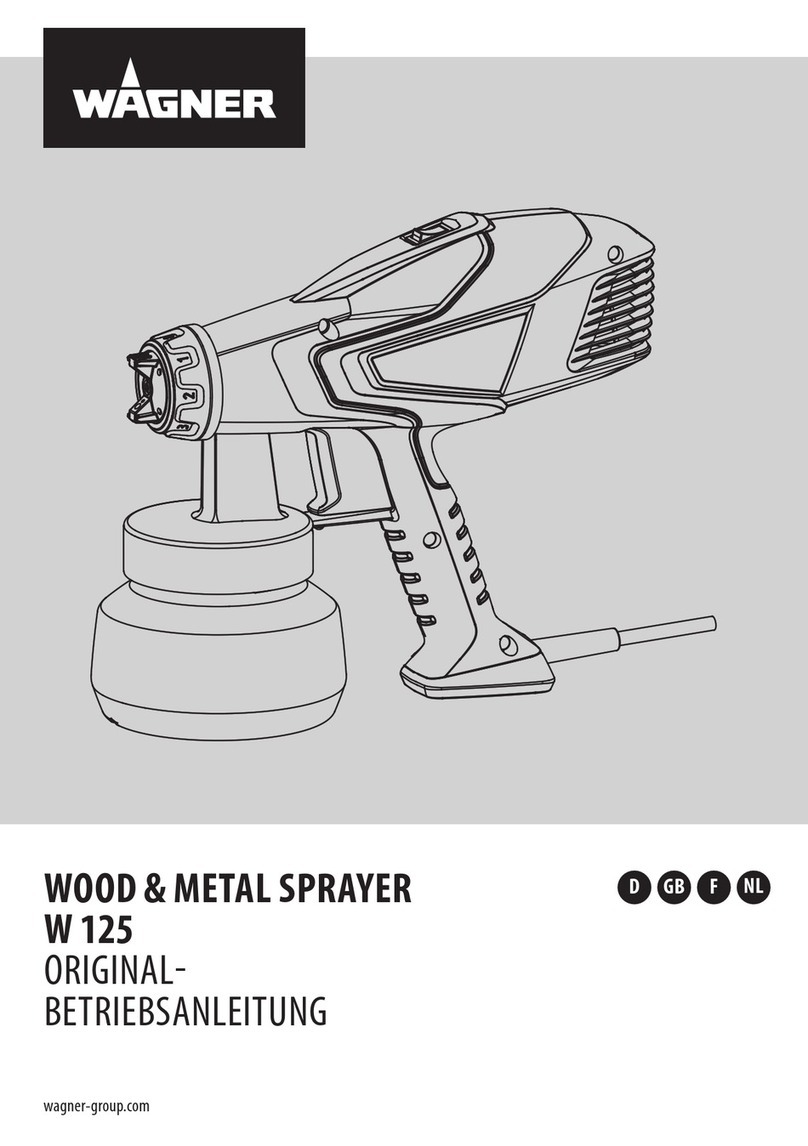
4
SAFETY INSTRUCTIONS FOR PAINT SPRAYER
CAUTION! Danger of injury! Never point the spray gun at
yourself or other persons or animals.
1.Only coating materials such as paints, enamels, varnishes,
without additional warming.
2. The device may not be based in work places which are
covered by the explosion protection regulations.
3. When spraying, ensure that there are no sources of ignition,
wires, hot surfaces, etc, in the area.
4. Wear breathing protection when spraying.
5. Inside and outside care must be taken that no solvent vapors
are sucked into the device.
6.When outdoors observe wind direction. When working indoors
7. Do not spray at the device.
8. The device only splash-proof when the air hose is correctly
connected.
9. Do not let children play with the device. Keep out of reach of
children.
10. Care must be taken that the mains cable is not damaged. If
damage is observed, bake immediately to our authorized
service centre to be changed.
13. Take precautionary measures against potential hazards from
spray liquid and follow any instructions given on containers or
laid down by the manufacturer of liquid.
14. Do not spray any liquids of unknown hazard potential.
15. Forbidden to spray to the hatch of the motor and etc.
16. When spraying normally, the main unit should not be under
the head of the gun and the container (Fig. 1).
EXPLANATION OF THE SYSTEM
The device works according to low pressure spraying technique.
A high volume of air surrounds the spray jet being ejected under
the lowest of spray mist .The coating material is applied to the
object quickly and exactly.
material. This gives perfect spraying result with a respective
saving of coating material and is therefore good for the
environment.
DESCRIPTION
1. Air cap
2. Nozzle
3. Union nut
4. Air hose
5. Spray gun
7. Trigger
8. Container
9. Motor blower
10. ON/OFF switch
11. Shoulder Strap
12. Air concentration nozzle
SPECIFICATIONS
Power input….…………………… 500W
Spraying pressure.………………. 0.1-0.2bar
Flow rate ..................................... 200ml/min
Max viscosity…….……….………. 40DIN-S
Nozzle…….…..………………….. Φ1.0mm
Container capacity……….……… 1000ml
Air hose length…….…………….. 1.8m
Sound pressure level……………. 80 dB(A)
Oscillation level…………………… <0.25m/s2
Net weight ………………………… 2.9 kg
APPLICATION
Interior and exterior painting and staining of decks, outdoor
furniture, fences, and walls
MATERIALS WHICH CAN BE USED
Solvent containing and water-dilutable enamel paints, vanishes,
primers, two-component paints, clear enamels, motor-vehicle
enamels, mordants and wood protectives.
MATERIALS WHICH CAN NOT BE USED
Wall paints (emulsions) etc., lye and acid containing coating
materials.
PREPARATION
MEASURING THE VISCOSITY (Fig. 2)
Information regarding a sprayable dilution is normally not to be
found on the material tin.
Please use the viscosity table below.
viscosity=thickness of the coating material.
1. Thoroughly stir the coating material before starting
measurement.
2. Immerse the viscosity measuring cup (contents 100cm3)
completely in the coating material below rim level and allow
3. Lift the viscosity measuring cup and measure the time in
Note: The runout time is called DIN seconds (DIN-s).
Solvent containing gloss paints ..............................15-50
Primers ..................................................................25-50
Mordants ............................................................... undiluted
2 component paints ...............................................20-50
Clear varnishes ......................................................15-40
Water-dilutable gloss paints .................................. 20-40
Motor-vehicle enamels .......................................... 20-40
Wood preservatives ............................................... undiluted
VISCOSITY TABLE
Coating material Viscosity DIN-s
